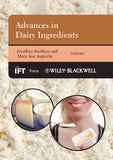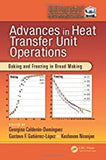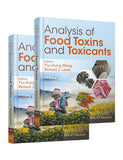A Textbook of Modern Toxicology, 4th Edition by Ernest Hodgson (Editor)
A Textbook of Modern Toxicology, 4th Edition
The Fourth Edition includes additional chapters on new approaches to toxicology - molecular methods (-omics: toxicogenomics, proteomics, and metabolomics), bioinformatics, and systems biology – and continues the legacy of its predecessors to provide up-to-date insights into acute toxicity and chemical carcinogenesis, organ toxicity, in vitro and in vivo toxicity testing, ecological risk assessment, and many other areas of toxicology that help foster a solid comprehension of the field.
Also featured in the Fourth Edition are end-of-chapter questions and a Solutions Manual available separately for academic adopters.
Contributors.
PART I Introduction.
1 Introduction to Toxicology (Ernest Hodgson).
1.1 Definition and Scope.
1.2 Relationship to Other Sciences.
1.3 A Brief History of Toxicology.
1.4 Dose-Response Relationships.
1.5 Sources of Toxic Compounds.
1.6 Movement of Toxicants in the Environment.
2 Introduction to Biochemical and Molecular Methods in Toxicology (Ernest Hodgson, Gerald A. LeBlanc, Sharon A. Meyer and Robert C. Smart).
2.1 Introduction.
2.2 Cell Culture Techniques.
2.3 Molecular Techniques.
2.4 Immunochemical Techniques.
2.5 Proteomics.
2.6 Metabolomics.
2.7 Bioinformatics.
2.8 Summary and Conclusions.
PART II Classes of Toxicants.
3 Exposure Classes, Toxicants in Air, Water, Soil, Domestic and Occupational Settings (W. Gregory Cope).
3.1 Air Pollutants.
3.2 Water and Soil Pollutants.
3.3 Occupational Toxicants.
4 Classes of Toxicants: Use Classes (W. Gregory Cope and Ernest Hodgson).
4.1 Introduction.
4.2 Metals.
4.3 Agricultural Chemicals (Pesticides).
4.4 Food Additives and Contaminants.
4.5 Toxins.
4.6 Solvents.
4.7 Therapeutic Drugs.
4.8 Drugs of Abuse.
4.9 Combustion Products.
4.10 Cosmetics.
PART III Toxicant Processing In Vivo.
5 Absorption and Distribution of Toxicants (Ronald E. Baynes and Ernest Hodgson).
5.1 Introduction.
5.2 Cell Membranes.
5.3 Mechanisms of Transport.
5.4 Physicochemical Properties Relevant to Diffusion.
5.5 Routes of Absorption.
5.6 Toxicant Distribution.
5.7 Toxicokinetics.
6 Metabolism of Toxicants (Ernest Hodgson and Randy L. Rose).
6.1 Introduction.
6.2 Phase I Reactions.
6.3 Phase II Reactions.
7 Reactive Metabolites (Ernest Hodgson and Randy L. Rose).
7.1 Introduction.
7.2 Activation Enzymes.
7.3 Nature and Stability of Reactive Metabolites.
7.4 Fate of Reactive Metabolites.
7.5 Factors Affecting Toxicity of Reactive Metabolites.
7.6 Reactive Oxygen Species.
7.7 Examples of Activating Reactions.
7.8 Summary and Conclusions.
8 Chemical and Physiological Influences on Xenobiotic Metabolism (Andrew D. Wallace and Ernest Hodgson).
8.1 Introduction.
8.2 Nutritional Effects.
8.3 Physiological Effects.
8.4 Comparative and Genetic Effects.
8.5 Chemical Effects.
8.6 Environmental Effects.
8.7 Summary and Conclusions.
9 Elimination of Toxicants (Gerald A. LeBlanc).
9.1 Introduction.
9.2 Transport.
9.3 Renal Elimination.
9.4 Hepatic Elimination.
9.5 Respiratory Elimination.
9.6 Conclusion.
PART IV Toxic Action.
10 Acute Toxicity (Gerald A. LeBlanc).
10.1 Introduction.
10.2 Acute Exposure and Effect.
10.3 Dose-Response Relationships.
10.4 Non-Conventional Dose–Response Relationships.
10.5 Alternative Methods.
10.6 Mechanisms of Acute Toxicity.
11 Chemical Carcinogenesis (Robert C. Smart).
11.1 DNA Damage and Mutagenesis.
11.2 General Aspects of Cancer.
11.3 Human Cancer.
11.4 Classes of Agents That Are Associated with Carcinogenesis.
11.5 General Aspects of Chemical Carcinogenesis.
11.6 Oncogenes.
11.7 Tumor Suppressor Genes.
12 Teratogenesis (Jill A. Barnes and Ida M. Washington).
12.1 Introduction.
12.2 Overview of Embryonic Development.
12.3 Principles of Teratogenesis.
12.4 Mechanisms of Teratogenesis.
12.5 Future Considerations.
PART V Organ Toxicity.
13 Hepatotoxicity (Andrew D. Wallace and Sharon A. Meyer).
13.1 Introduction.
13.2 Susceptibility of the Liver.
13.3 Types of Liver Injury.
13.4 Mechanisms of Hepatotoxicity.
13.5 Examples of Hepatotoxicants.
13.6 Metabolic Activation of Hepatotoxicants.
14 Nephrotoxicity (Joan B. Tarloff and Andrew D. Wallace).
14.1 Introduction.
14.2 Factors Contributing to Nephrotoxicity.
14.3 Examples of Nephrotoxicants.
14.4 Summary.
15 Toxicology of the Nervous System (Bonita L. Blake).
15.1 Introduction.
15.2 The Nervous System.
15.3 Toxicant Effects on the Nervous System.
15.4 Neurotoxicity Testing.
15.5 Summary.
16 Reproductive System (Heather Patisaul).
16.1 Introduction.
16.2 The-Hypothalamic-Pituitary-Gonadal Axis.
16.3 Male Reproductive Physiology.
16.4 Disruption of Male Reproduction by Toxicants.
16.5 Female Reproductive Physiology.
16.6 Disruption of Female Reproduction by Toxicants.
16.7 Summary.
17 Endocrine Toxicology (Gerald A. LeBlanc).
17.1 Introduction.
17.2 Endocrine System.
17.3 Endocrine Disruption.
17.4 Incidents of Endocrine Toxicity.
17.5 Conclusion.
18 Respiratory Toxicity (James C. Bonner).
18.1 Introduction.
18.2 Anatomy and Function of the Respiratory Tract.
18.3 Toxicant-Induced Lung Injury, Remodeling and Repair.
18.4 Occupational and Environmental Lung Diseases.
19 Immune System (MaryJane K. Selgrade).
19.1 Introduction.
19.2 The Immune System.
19.3 Immune Suppression.
19.4 Classification of Immune-Mediated Injury (Hypersensitivity).
19.5 Effects of Chemicals on Allergic Disease.
19.6 Other Issues: Autoimmunity, and the Developing Immune System.
PART VI Applied Toxicology.
20 Toxicity Testing (Ernest Hodgson and Helen Cunny).
20.1 Introduction.
20.2 Experimental Administration of Toxicants.
20.3 Chemical and Physical Properties.
20.4 Exposure and Environmental Fate.
20.5 In Vivo Tests.
20.6 In Vitro and Other Short-Term Tests.
20.7 Ecological Effects.
20.8 Risk Analysis.
20.9 The Future of Toxicity Testing.
21 Forensic and Clinical Toxicology (Sharon A. Meyer and Bonita L. Blake).
21.1 Introduction.
21.2 Forensic Toxicology.
21.3 Clinical Toxicology.
21.4 Analytical Methods in Forensic and Clinical Toxicology.
22 Prevention of Toxicity (Ernest Hodgson).
22.1 Introduction.
22.2 Legislation and Regulation.
22.3 Prevention in Different Environments.
22.4 Education.
23 Human Health Risk Assessment (Ronald E. Baynes).
23.1 Introduction.
23.2 Risk Assessment Methods.
23.3 Noncancer Risk Assessment.
23.4 Cancer Risk Assessment.
23.5 PBPK Modeling.
Part VII Environmental Toxicology.
24 Toxicant Analysis (Chris Hofelt).
24.1 Introduction.
24.2 Environmental Sample Collection Methods.
24.3 Analytical Techniques.
24.4 Quantification, QA and QC.
24.5 Summary.
25 Basics of Environmental Toxicology (Gerald A. LeBlanc and David B. Buchwalter).
25.1 Introduction.
25.2 Environmental Persistence.
25.3 Bioaccumulation.
25.4 Toxicity.
25.5 Conclusion.
26 Transport and Fate of Toxicants in the Environment (Damian Shea).
26.1 Introduction.
26.2 Sources of Toxicants to the Environment.
26.3 Transport Processes.
26.4 Equilibrium Partitioning.
26.5 Transformation Processes.
26.6 Environmental Fate Models.
27 Environmental Risk Assessment (Damian Shea).
27.1 Introduction.
27.2 Formulating the Problem.
27.3 Analyzing Exposure and Effects Information.
27.4 Characterizing Risk.
27.5 Managing Risk.
Part VIII New Approaches in Toxicology.
28 Perspectives on Informatics in Toxicology (Seth W. Kullman, Carolyn J. Mattingly, Joel N. Meyer and Andrew Whitehead).
28.1 Introduction.
28.2 Transcriptomics.
28.3 Annotation Resources.
28.4 Genome Sequencing, Resequencing and Genotyping.
28.5 Epigenomic Profiling.
28.6 Computational Toxicology.
28.7 Informatics Tools in Toxicology.
29 Future Considerations (Ernest Hodgson).
29.1 Introduction.
29.2 Risk Assessment.
29.3 Risk Management.
29.4 Risk Communication.
29.5 In Vivo Toxicity.
29.6 In Vitro Toxicity.
29.7 Molecular and Biochemical Toxicology.
29.8 Development of Selective Toxicants.
29.9 Summary and Conclusions.
Glossary.
Index.
- Adds chapters on new approaches to toxicology: molecular methods (-omics: toxicogenomics, proteomics, and metabolomics), bioinformatics, and systems biology
- Now featured in the Fourth Edition are end-of-chapter questions
- Provides a very thorough, concise and up-to-date summary of the most important topics within the toxicology field
- Presents the interdisciplinary nature of toxicological studies
- Continues from prior editions with coverage of basic concepts in toxicology and adds chapters on molecular methods (-omics: toxicogenomics, proteomics, and metabolomics), bioinformatics, and systems biology
- Includes end-of-chapter questions
- Online Solutions Manual available for academic adopters
- Does not require an extensive background in anatomy and physiology
"It is edited by Dr. Ernest Hodgson, a well known mentor and Biochemical Toxicologist. That is about the best one can get. I know the book will be done well." -- Harihara M. Mehendale, Department of Toxicology, College of Pharmacy, University of Louisiana at Monroe, LA

















